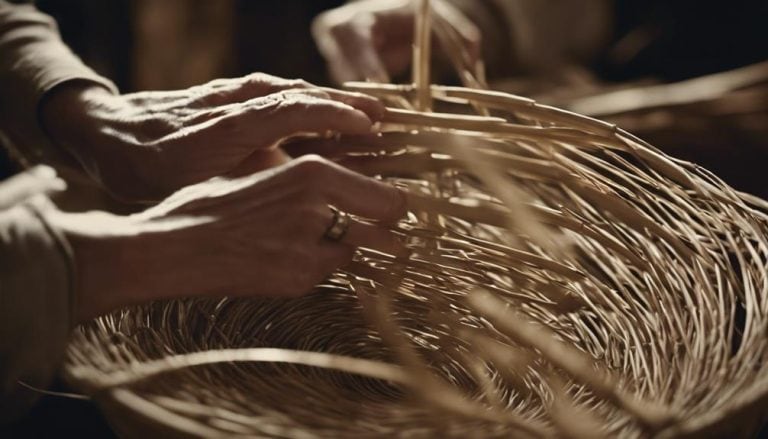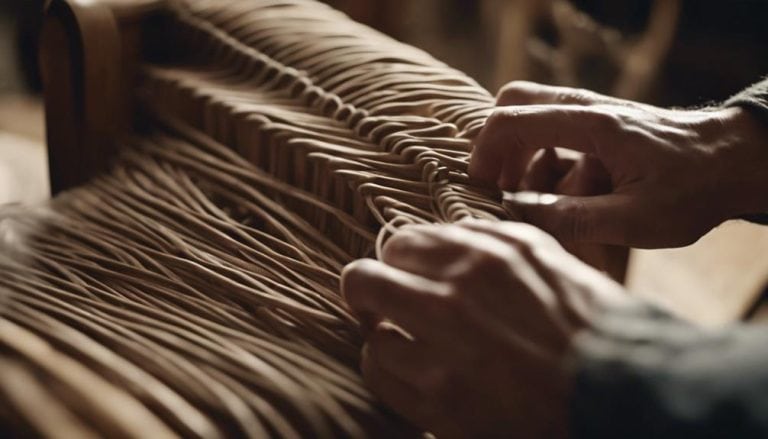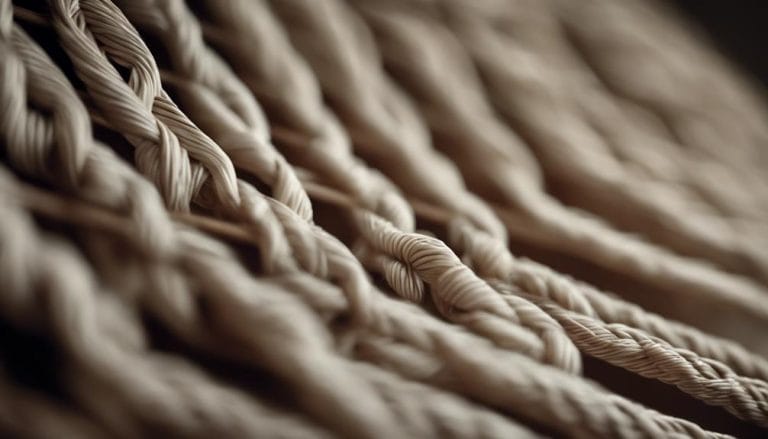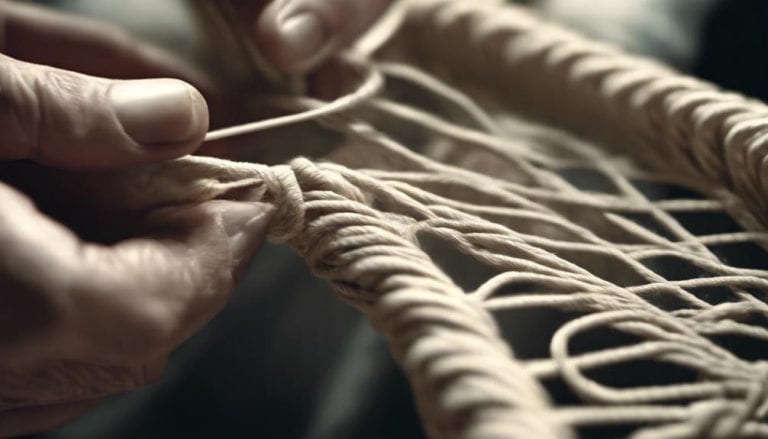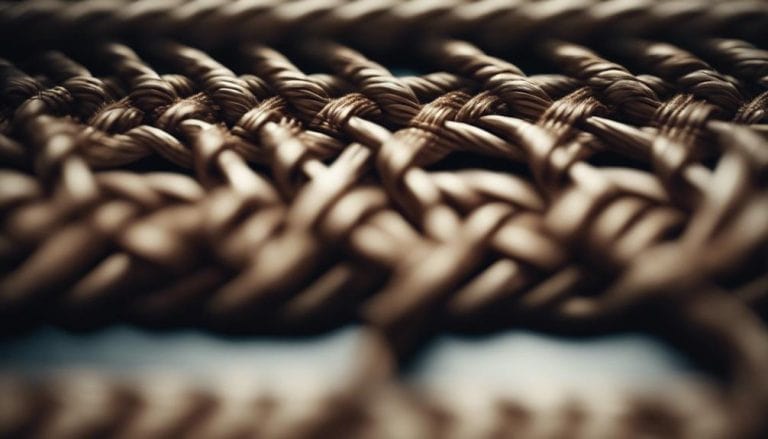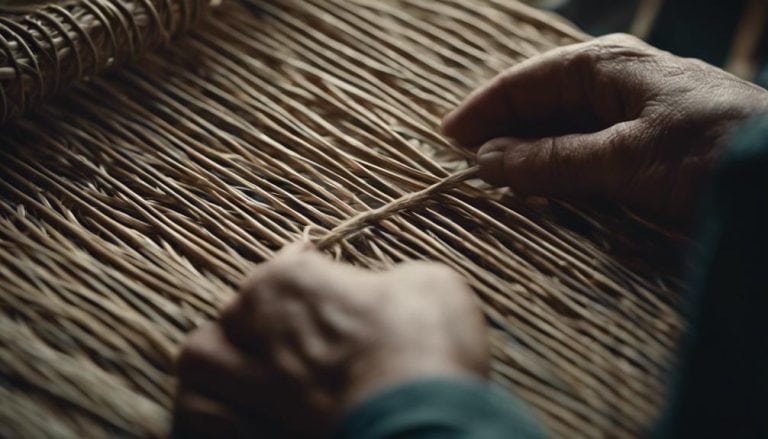Preserving Crafts Made With Danish Cord
Maintaining the integrity of Danish cord crafts is crucial for upholding a rich heritage of skilled artistry. However, have you ever considered the impact of environmental factors on these delicate pieces?
External influences, from humidity to temperature fluctuations, can significantly affect the longevity of Danish cord creations. But fear not, as there are practical solutions to safeguard these masterpieces for the future.
Preserving crafts made with Danish cord involves proper storage to prevent damage. Regular cleaning and avoiding exposure to sunlight can help maintain their quality.
Key Takeaways
- Danish cord crafts embody historical significance and intricate weaving techniques.
- Preservation tips include regular cleaning, avoiding direct sunlight, and carefully handling spills.
- Conservation efforts honor skilled craftsmanship and protect cultural heritage.
- Future strategies involve sustainable materials, educational programs, digital archives, and collaboration with artisans.
Historical Significance of Danish Cord Crafts
Exploring the historical significance of Danish cord crafts reveals a captivating narrative of craftsmanship that emerged during the early 20th century in Scandinavia. With its intricate weaving techniques, the Danish cord embodies a commitment to design excellence that has stood the test of time. Designers like Hans Wegner were pivotal in popularizing Danish cord crafts, elevating them to symbolize high-quality furniture and aesthetics.
The weaving techniques utilized in Danish cord crafts showcase the skill of artisans and highlight a deep-rooted tradition of blending form and function. The attention to detail and precision required in creating Danish cord pieces speak volumes about the dedication to excellence present in each creation.
The legacy of Danish cord crafts extends beyond mere furniture; it represents a harmonious fusion of traditional weaving methods with contemporary design sensibilities. This historical lineage of craftsmanship is a testament to Danish cord art’s enduring appeal and timeless elegance.
Techniques for Preserving Danish Cord Art
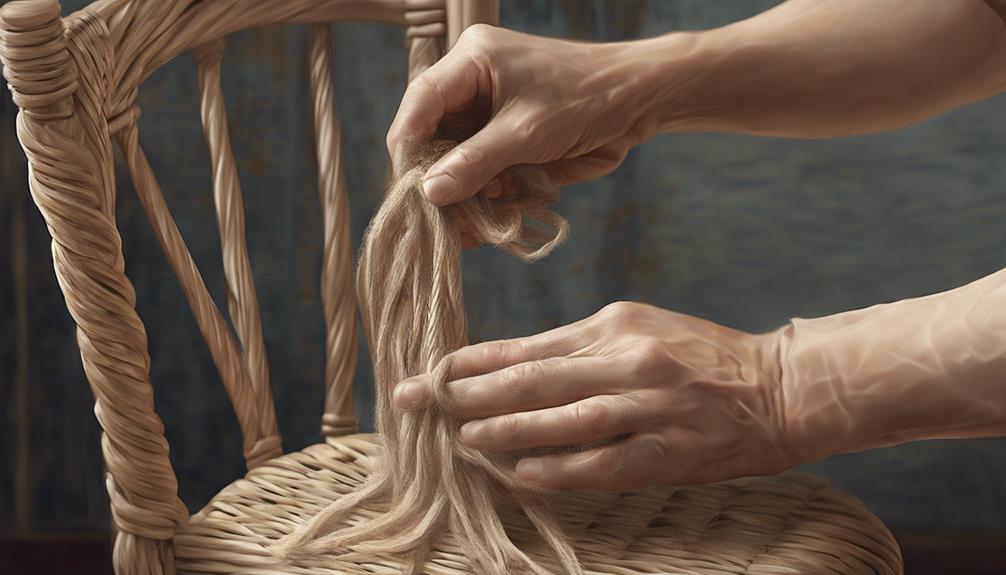
Proper preservation techniques must be diligently employed to ensure the longevity and quality of Danish cord art. When it comes to woven Danish cord, particularly in seat weaving or cord seats, preservation methods play a crucial role in maintaining the beauty and integrity of the art form. Regular cleaning is essential, using a damp cloth with mild soap to gently remove dirt and grime without causing damage to the delicate cord material. Additionally, avoiding direct sunlight helps prevent fading and weakening of the fibers.
Preservation techniques for Danish cord art also involve careful handling of spills and stains to prevent permanent damage and maintain the piece’s aesthetics. It’s important to prevent dust build-up by regularly dusting and avoiding harsh cleaning agents that could harm the woven material. By paying close attention to detail and following specific care instructions, the longevity and quality of Danish cord art can be preserved for generations to come.
Importance of Conservation for Danish Cord
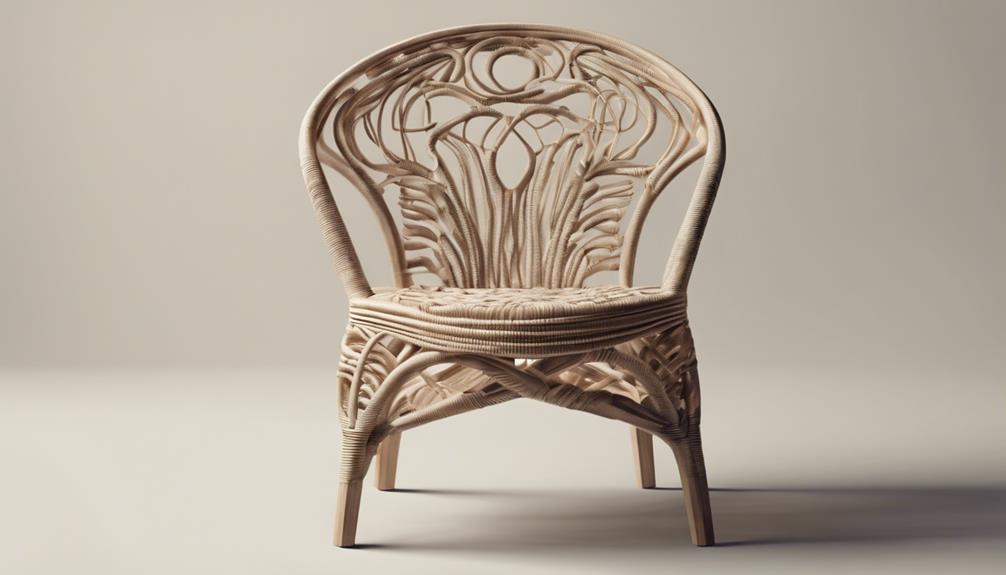
Preserving Danish cord art goes beyond mere maintenance; it involves safeguarding a cultural legacy that encapsulates this traditional weaving craft’s historical significance and craftsmanship. Conservation efforts for Danish cord are essential due to the intricate techniques and patterns that define this art form.
The importance of preservation for Danish cord can be seen in the following ways:
- Cultural Heritage: Conservation of Danish cord pieces helps protect the rich cultural heritage associated with this craft, ensuring its continued recognition and appreciation.
- Craftsmanship: By preserving Danish cord furniture and artwork, we honor the skilled craftsmanship of artisans who’ve mastered the techniques required for this unique weaving style.
- Legacy: Supporting conservation initiatives for Danish cord weaving ensures that the legacy of this time-honored craft is passed down to future generations, maintaining its relevance and significance in the world of traditional craftsmanship.
Tips for Long-Term Maintenance of Danish Cord Pieces
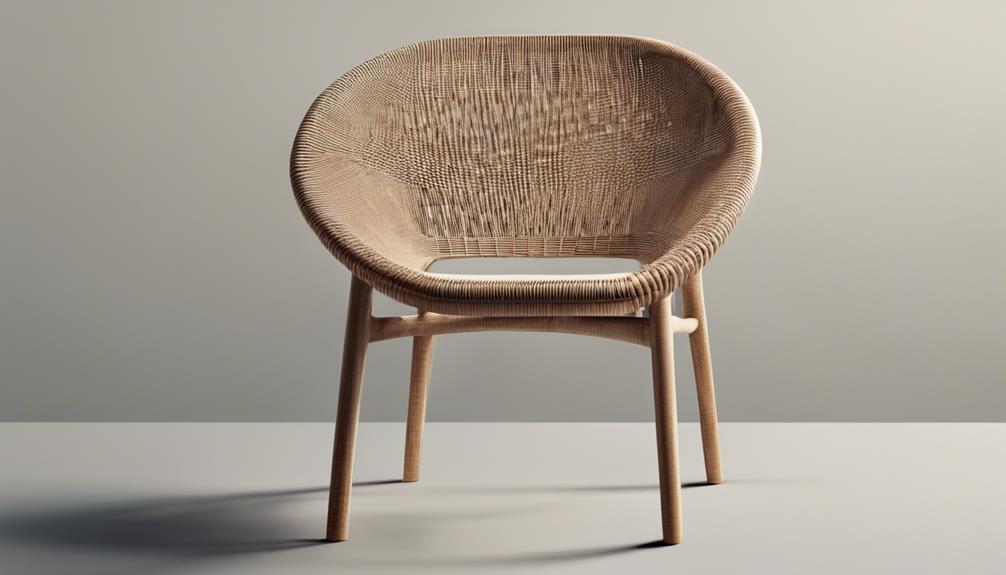
Inspecting Danish cord pieces regularly for signs of wear and tear is crucial for addressing maintenance issues promptly and ensuring their longevity. To maintain Danish cord seats, use a soft brush attachment on a vacuum cleaner to gently remove dust and debris from the woven seats. Danish cord furniture must be kept away from direct heat sources to prevent the cords from drying out and weakening.
Additionally, storing Danish cord items in a well-ventilated area is key to preserving the integrity of the woven cords over time. Avoid placing heavy objects on Danish cord seats, which can stretch or distort the weaving pattern.
Future Preservation Efforts for Danish Cord Art
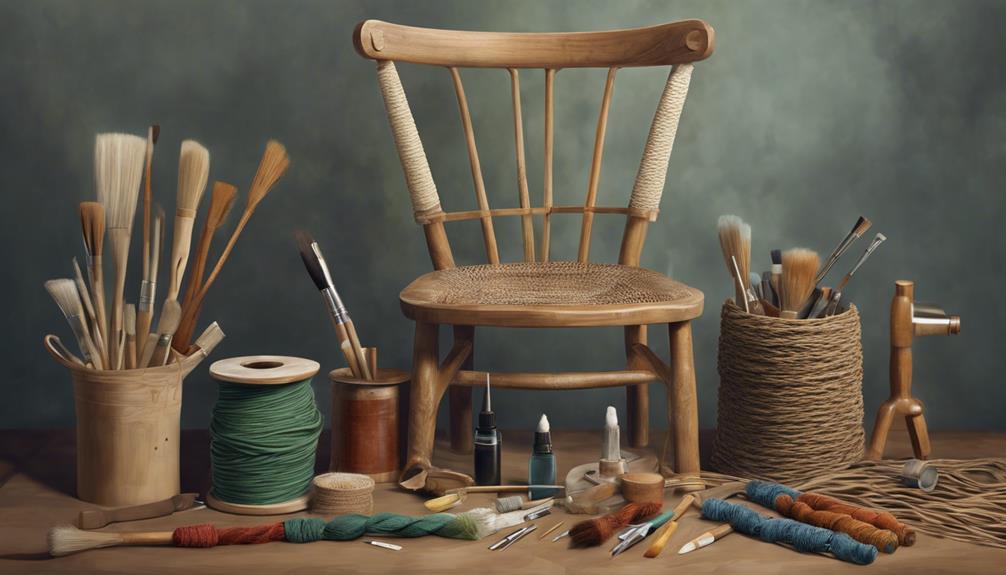
Engaging in collaborative endeavors with artisans and designers plays a pivotal role in revitalizing and promoting the art of Danish cord weaving for future preservation efforts. By harnessing the expertise of skilled craftsmen and innovative designers, we can ensure that Danish cord art’s intricate techniques and cultural significance are preserved for generations to come.
To achieve this goal, we must focus on several key strategies:
- Exploring Sustainable Materials: Researching and implementing sustainable materials and practices will ensure the long-term preservation of Danish cord crafts.
- Educational Initiatives: Establishing educational programs to train new generations in Danish cord weaving is essential for safeguarding its legacy.
- Digital Archives and Exhibitions: Creating digital archives and organizing exhibitions will help showcase Danish cord art’s historical importance and artistic value, fostering wider appreciation and understanding of this traditional craft.
Frequently Asked Questions
Can Danish Cord Get Wet?
Yes, the Danish cord can get wet. To protect it from moisture, dry it thoroughly to prevent mold. Avoid soaking or harsh cleaners. Regular dusting and spot cleaning maintain its longevity. Proper care is crucial.
Which Is Better Laced or Unlaced Danish Cord?
Laced Danish cord weaves intricate beauty, while unlaced offers sleek simplicity. Durability favors laced for complicated patterns. Maintenance varies; laced may require more care. Design-wise, laced wows with detail, while unlaced exudes modern elegance. Choose based on the desired aesthetic impact.
What Is Danish Paper Cord Made Of?
Danish paper cord, made of twisted and treated paper fibers, boasts durability and flexibility. Its strength and ability to withstand regular use make it ideal for weaving chair seats. Maintenance is minimal, and its properties enhance the furniture’s support and visual appeal.
How Much Danish Cord for One Chair?
I estimate the Danish cord requirement for one chair is around two pounds. Understanding the weaving techniques and keeping the original nails intact is crucial. This ensures proper completion and longevity of the chair.
Conclusion
In conclusion, preserving the intricate Danish cord crafts is like holding onto a piece of history, weaving together the threads of tradition and artistry. As we delicately care for these timeless pieces, we aren’t just maintaining furniture but safeguarding a legacy that will withstand the test of time. Let’s continue to cherish and protect these treasures, ensuring that the beauty and craftsmanship of Danish cord art endure for generations to come.


